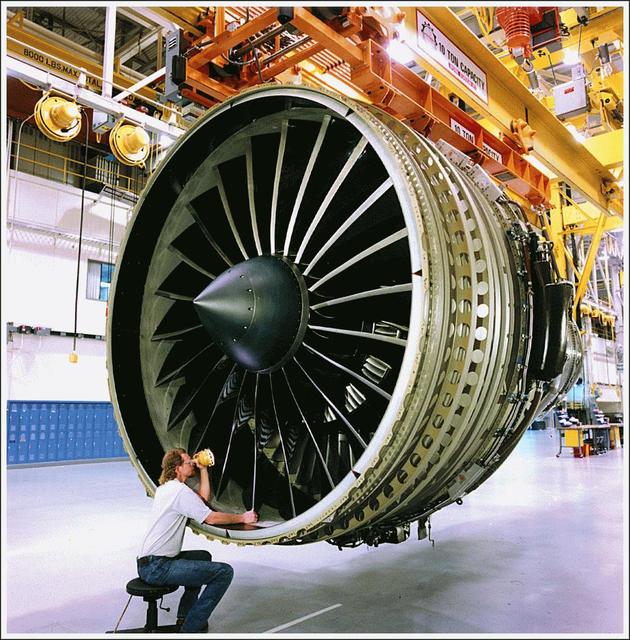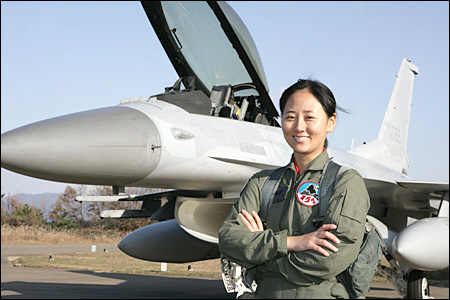Three Stars: Aerospace Program
Today is a significant day for Russia and the whole world. Exactly 50 years ago, our compatriot Yu. A. Gagarin, on the Vostok spaceship, made the first orbital flyby of the Earth in the history of mankind. This flight lasted only 108 minutes, but marked a powerful breakthrough in space exploration. In tribute to the international holiday, in this post we will talk about the contribution of our company to the development of aviation and astronautics.
The word Samsung (삼성, 三星) in Korean means "three stars." These are two traditional cultural symbols: “three” means power, and “star” means infinity. One way or another, a company with such a name should be expected to develop an aerospace direction. There is one more reason to talk about it - in the comments to the post on weapons systemsthat we do, we promised to do it. The story is a little sad (because now there is no more direction), but also a bit like science fiction.
The basis for this area within the company laid in 1977 by Samsung Precision Company. Initially (since 1980), the priority area of its activity was the production of jet engines in conjunction with the American General Electrics.

In February 1987, the division was renamed Samsung Aerospace Industries (SAI). In the same year, the construction of helicopters began. In the nineties, their lineup was brought to six. A particularly popular model was (and still remains) created jointly with the Texas Bell Helicopter - SB427. The production of non-military and transport helicopter technology Samsung Techwin, the successor to SAI, has been successfully engaged to this day. Products are popular among those who can afford a helicopter.

Ten years later (in 1997), the first South Korean KF-16 fighter took off. As the name implies, this is a modification of the popular American F-16, developed back in the mid-seventies, purchased under license from Lockheed Martin. In fairness, we note that the SAI did not engage in screwdriver assembly of spare parts. On the basis of the "Fighting Falcon" was created a fundamentally new, own machine. In KF-16, almost two and a half thousand parts are different from the American original. In total, more than one hundred and thirty such machines were assembled under the SAI (and then KAI), which for a small country like South Korea, you will agree, a lot.

In 1999, Samsung's aerospace business was scaled down, but not because something went wrong. The fact is that at the state level, it was decided to merge the respective divisions of Samsung, Daewoo and Hyundai into a single state corporation Korea Aerospace Industries (KAI), which has since been exclusively engaged in aerospace research and production of aircraft.

However, Samsung Techwin, which replaced SAI in 2000, continues some of the long-term programs that were launched back in the nineties. In particular, work continues on preparations for the creation of space stations on the moon and Mars in the first half of the 21st century. We are talking about the construction of residential and industrial modules, as well as the development of life support systems. All this, imagine, also Samsung.

The word Samsung (삼성, 三星) in Korean means "three stars." These are two traditional cultural symbols: “three” means power, and “star” means infinity. One way or another, a company with such a name should be expected to develop an aerospace direction. There is one more reason to talk about it - in the comments to the post on weapons systemsthat we do, we promised to do it. The story is a little sad (because now there is no more direction), but also a bit like science fiction.
The basis for this area within the company laid in 1977 by Samsung Precision Company. Initially (since 1980), the priority area of its activity was the production of jet engines in conjunction with the American General Electrics.

In February 1987, the division was renamed Samsung Aerospace Industries (SAI). In the same year, the construction of helicopters began. In the nineties, their lineup was brought to six. A particularly popular model was (and still remains) created jointly with the Texas Bell Helicopter - SB427. The production of non-military and transport helicopter technology Samsung Techwin, the successor to SAI, has been successfully engaged to this day. Products are popular among those who can afford a helicopter.

Ten years later (in 1997), the first South Korean KF-16 fighter took off. As the name implies, this is a modification of the popular American F-16, developed back in the mid-seventies, purchased under license from Lockheed Martin. In fairness, we note that the SAI did not engage in screwdriver assembly of spare parts. On the basis of the "Fighting Falcon" was created a fundamentally new, own machine. In KF-16, almost two and a half thousand parts are different from the American original. In total, more than one hundred and thirty such machines were assembled under the SAI (and then KAI), which for a small country like South Korea, you will agree, a lot.

In 1999, Samsung's aerospace business was scaled down, but not because something went wrong. The fact is that at the state level, it was decided to merge the respective divisions of Samsung, Daewoo and Hyundai into a single state corporation Korea Aerospace Industries (KAI), which has since been exclusively engaged in aerospace research and production of aircraft.

However, Samsung Techwin, which replaced SAI in 2000, continues some of the long-term programs that were launched back in the nineties. In particular, work continues on preparations for the creation of space stations on the moon and Mars in the first half of the 21st century. We are talking about the construction of residential and industrial modules, as well as the development of life support systems. All this, imagine, also Samsung.

